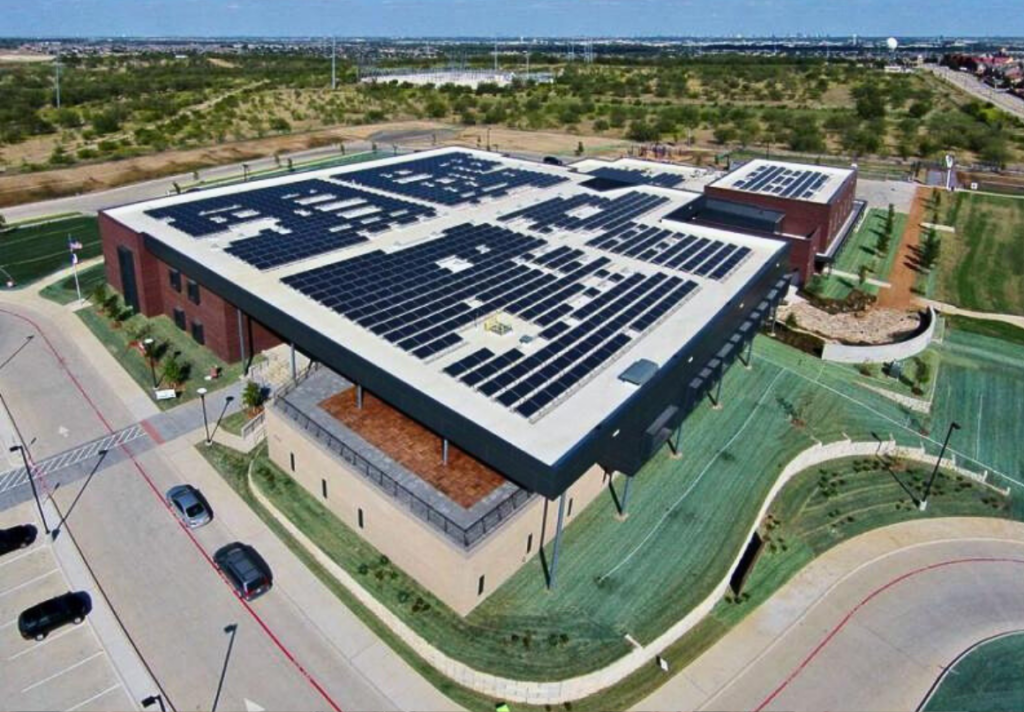In a state that’s known for its blazing hot summers and pioneering spirit, Texas is taking innovative steps to introduce renewable energy into its education system. By installing solar panels, wind turbines, and other renewable energy sources, school districts across the Lone Star State are showing their students the potential of sustainable energy while also providing cost-effective solutions to their own energy needs. In this blog post, we’ll explore the advantages of this approach and how it can help to create an exciting learning environment for students.
Interested in diving right in? Be sure to download our whitepaper, Solar for Texas ISDs. Click here for more information.
Why Renewable Energy is Important for Schools
Renewable energy is more than just a buzzword or a trend; it’s a crucial part of our future. And what better place to start building a sustainable future than in our schools? There are several reasons why renewable energy is important for schools, and the benefits go beyond just saving money on electricity bills.
First and foremost, introducing renewable energy in schools teaches students about the importance of sustainability and environmental stewardship. By witnessing the direct impact of renewable energy sources like solar panels and wind turbines, students learn about the power of clean, renewable energy and how it can help combat climate change. It instills in them a sense of responsibility and empowers them to become active participants in creating a greener world.
Secondly, incorporating renewable energy in schools provides an opportunity for hands-on learning. Students can engage in science experiments and projects related to renewable energy, deepening their understanding of the subject. They can explore topics such as how solar panels work, the benefits of wind energy, and the environmental impact of different energy sources. This hands-on approach not only makes learning more exciting and interactive but also helps students develop critical thinking and problem-solving skills.
Additionally, investing in renewable energy can result in significant cost savings for school districts. While there may be an upfront investment required for installing solar panels or wind turbines, the long-term benefits are undeniable. Schools can generate their own electricity, reducing reliance on the grid and saving money on utility bills. These cost savings can then be reinvested into other areas, such as improving educational resources, hiring additional teachers, or enhancing extracurricular programs.
Overcoming Obstacles in Installing Renewable Energy
Installing renewable energy sources in school districts can be a transformative step towards a sustainable future. However, there are certain obstacles that school districts may encounter when implementing renewable energy initiatives. Let’s explore some common challenges and how schools can overcome them.
One major obstacle is the initial cost of installing renewable energy systems. Solar panels, wind turbines, and other renewable energy technologies can require a significant upfront investment. For cash-strapped school districts, this financial hurdle can seem insurmountable. However, there are solutions available. Schools can seek out grants and funding opportunities specifically geared towards renewable energy projects in educational institutions.
Another challenge is the lack of expertise and knowledge within school districts when it comes to renewable energy systems. Many educators may feel overwhelmed by the technical aspects of installing and maintaining these technologies. To overcome this, school districts can seek assistance from experts in the field. Partnering with local renewable energy companies or inviting professionals to conduct workshops and training sessions can equip school staff with the necessary knowledge and skills. Additionally, collaborating with other schools or districts that have successfully implemented renewable energy initiatives can provide valuable insights and support. By sharing experiences and best practices, schools can overcome the knowledge gap and confidently embrace renewable energy solutions.
Infrastructure constraints can also pose a challenge to installing renewable energy systems. Some school buildings may not have adequate space or structural capabilities to accommodate solar panels or wind turbines. In such cases, schools can explore alternative solutions. For example, they can consider installing solar canopies or awnings in parking lots or playgrounds to maximize space utilization.
Spotlight on Successful Texas School District Implementations
One school district leading the way is Bridgeport ISD. Bridgeport ISD was awarded a grant from the State energy Conservation Office to assist in funding the solar installation. Bridgeport ISD was awarded $900,000 for the development of solar for their High School. The total array capacity was 170 kilowatt system. The PV array along with several other energy efficiency measures help reduce Bridgeport ISD’s utility cost by 30-40%.
Another school district that has embraced renewable energy is Carroll Independent School District located in Southlake. Carroll ISD installed a 567 kW system at their middle school and a 500 kW system at their high school. These two systems helped reduce their energy costs by as much as 70%. Carroll ISD was able to utilize the Oncor PV Incentive program which helped offset around 30% of the total cost to install the system. Carroll ISD has also incorporated web-based monitoring for students to learn more about the system and its production.
These are just a few examples of the many school districts in Texas that have successfully integrated renewable energy into their educational programs. Through their commitment to sustainability and innovation, these districts are not only reducing their environmental impact but also providing students with invaluable hands-on learning experiences.
Conclusion
By spotlighting these successful implementations, other school districts in Texas can gain inspiration and insight into how they can begin their own renewable energy journeys. With the right planning, funding, and community support, schools across the Lone Star State can harness the power of renewable energy and create a greener future for their students. Contact Yearout Energy today!
If you’re looking to learn more, you can also Download Our Whitepaper: Solar for Texas ISDs.

